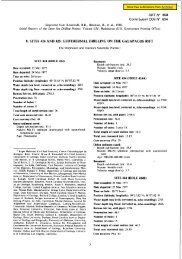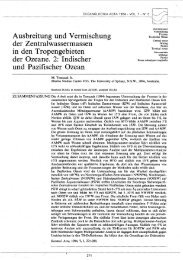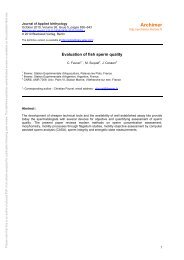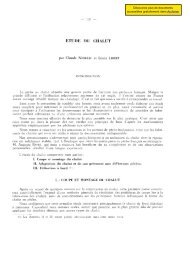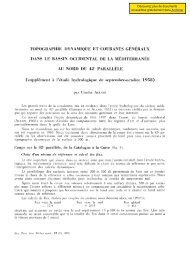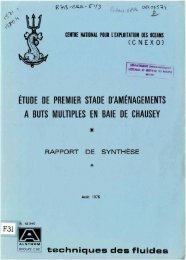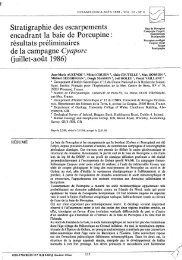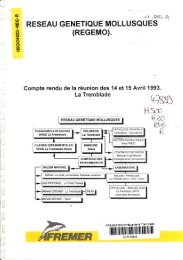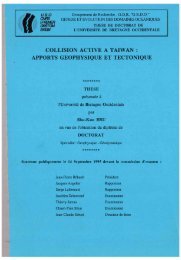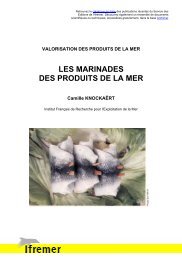Approche quantitative de la fonction de nourricerie jouée par les ...
Approche quantitative de la fonction de nourricerie jouée par les ...
Approche quantitative de la fonction de nourricerie jouée par les ...
Create successful ePaper yourself
Turn your PDF publications into a flip-book with our unique Google optimized e-Paper software.
Chapitre 4 : Impact of vegetation structure dynamics and usage on the nursery function<br />
of West European tidal salt-marshes.<br />
f<strong>les</strong>us, L. 1758). They frequent the estuarine zone during their migrations. Two strict marine<br />
species were caught during the sampling, the Garfish (Belone belone, L. 1761), and the<br />
trans<strong>par</strong>ent goby (Aphia minuta, Risso 1810). More than half of the popu<strong>la</strong>tion was<br />
composed of marine euryhaline species (San<strong>de</strong>el (Ammodytes tobianus, L. 1758), Silversi<strong>de</strong><br />
(Atherina presbyter, Cuvier 1829), At<strong>la</strong>ntic herring (Clupea harengus, L. 1758), Seabass (D.<br />
<strong>la</strong>brax), Gol<strong>de</strong>n grey mullet (Liza aurata, Risso 1810), Pilchard (Sardina pilchardus,<br />
Walbaum, 1792), European anchovy (Engraulis encrasicolus, L. 1758), European sprat<br />
(Sprattus sprattus, L. 1758), Common sole (Solea solea, L. 1758), Gilt head (S<strong>par</strong>us aurata,<br />
L. 1758)). The rest of the popu<strong>la</strong>tion (about 20%) was composed of resi<strong>de</strong>nt autochthonous<br />
species (Three-spined stickleback (Gasterosteus aculeatus, L. 1758), Gobies of genus<br />
Pomatoschistus spp. and Nilsson’s pipefish (Syngnathus rostel<strong>la</strong>tus, Nilsson 1855)).<br />
The fish popu<strong>la</strong>tion was dominated in terms of biomass by Mugilidae, accounting for<br />
93.6% of the total biomass captured (81.1% for Thinlip mullet and 12.5% for Gol<strong>de</strong>n grey<br />
mullet). Eight species accounted than 93% of total numbers, in or<strong>de</strong>r of importance they were<br />
Seabass, Gol<strong>de</strong>n grey mullet, Thinlip mullet, Common goby (Pomatoschistus microps,<br />
Krøyer 1838), European anchovy, Sand goby, Cluepidae yoy and European sprat. However,<br />
these species did not colonise the salt marsh creeks in the same way and at the same<br />
frequency. The species occurring in the <strong>la</strong>rgest number of samp<strong>les</strong> were c<strong>la</strong>ssified as frequent<br />
(Table 1). These were mullets of the genus Liza (Gol<strong>de</strong>n grey mullet, %FO=92.6%, Thinlip<br />
mullet, %FO=77.8%), and the Sand goby (%FO=85.2%). Seabass occurred in 66.7% of<br />
catches. Six species were captured acci<strong>de</strong>ntally (%FO



